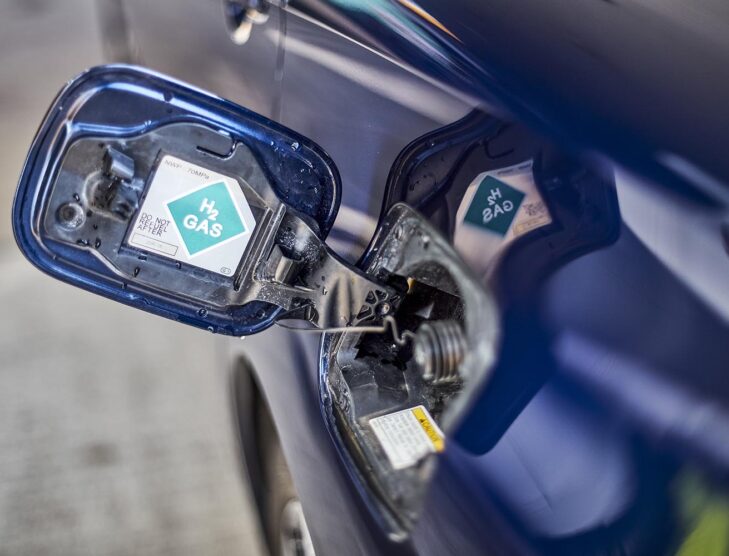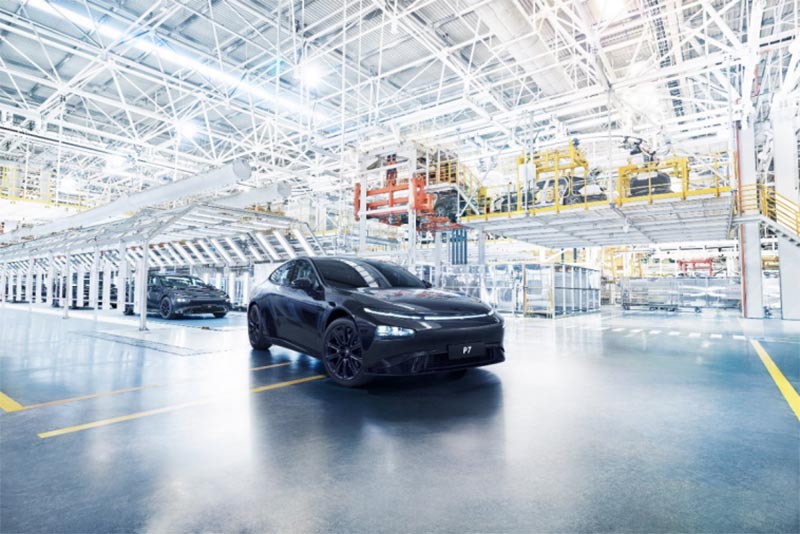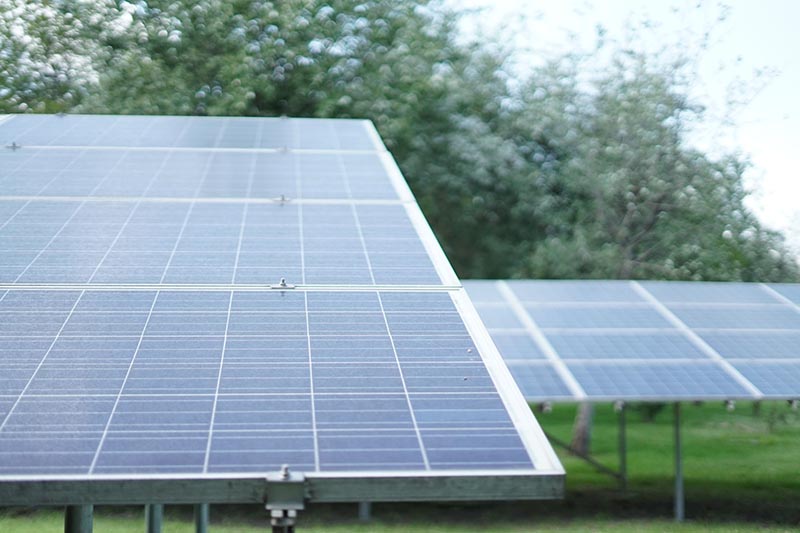
By 2060, hydrogen-based fuels may meet 25% of China’s transport needs
From an environmental perspective, China sometimes gets a bad rap. Yes, China is the largest emitter of carbon dioxide since it surpassed the United States in 2005, and it currently accounts for around one-third of global emissions. The world’s most populous nation also continues to have an unhealthy dependence on coal to fuel its large heavy manufacturing base, rapid urbanisation and ongoing economic growth.
China has faced criticism from some governments and analysts following the United Nations Climate Change Conference (COP26) held in Glasgow, Scotland in November 2021 for not setting more ambitious near-term emission reduction targets. Yet, China’s carbon dioxide (CO2) emissions remain well below many developed countries on a per capita basis—including the United States, Germany and even Norway, where electric vehicles make up nearly two-thirds of new car sales. The fact that numerous developed countries have transferred their carbon-intensive production chains to China has also intensified the nation’s environmental challenges.
The reality is that China has made giant strides in its green transformation and the commitment to its “dual carbon” targets of net-zero emissions before 2060 and peak emissions by 2030, which was announced in September 2020. China is also endeavouring to reduce carbon intensity by 65% by 2030, from 2005 levels, a measure of CO2 produced for every unit of gross domestic product (GDP).
China’s 14th Five-Year plan for 2021-2025 was released in March 2021 and is a key policy instrument in its decarbonisation path. The five-year plan includes binding, near-term targets to reduce energy intensity by 13.5% and carbon intensity by 18%. Share of non-fossil fuel in primary energy is also required to reach 20% by 2025 (up from 16% in 2020).

China is the leading producer of electric vehicles with more than 2.9 million battery electric vehicles (BEV) sold in 2021. The Asian nation accounted for half of the global growth in electric vehicles (EV) last year and has stringent policies and regulations in place to reduce fuel consumption and encourage EV uptake. China is also the top global producer and user of renewable energy, providing 46% of renewable capacity additions in 2021, and implemented a national Emissions Trading System (ETS) in July 2021 to address the emissions-intensive power sector. The power sector accounts for 48% of China’s emissions (including energy and industrial processes), followed by industry (36%), transport (8%) and buildings (5%).
The ETS is the largest carbon trading system in the world, though it has been criticised for an overly generous quota limit. There are expectations that the government will gradually tighten limits. There have also been suggestions that petrochemicals, chemicals, construction materials, steel, nonferrous metals, papermaking and aviation will be added to the national ETS in the future.
While China seems well poised for an assault on its greenhouse gases, the coal industry continues to cast a dark shadow over the Asian nation’s decarbonisation drive. Ongoing reliance on coal means achieving its stated climate objectives will be extremely challenging. The government has announced plans to start to scale back coal production from 2026 as it looks to develop a low-carbon, high-quality economic growth model.
Some analysts have expressed concerns China’s resolve may be waning when it comes to environmental protection. A more cautious tone from China’s government on climate issues has been noted in recent months. In March 2022, President Xi Jinping stressed that China—whose national conditions are “rich in coal, poor in oil and less in gas”—cannot simply “slam the brakes” on coal production and emphasised the need to maintain energy security. In February, China scrapped an ambitious goal of maximum carbon emissions in the steel industry by 2025. The industry has been given an additional five years to reach peak carbon emissions.
The green transition is a long, arduous process and trial and error are to be expected along the way. You could argue that speedy reductions are less important than establishing a foundation for deep reductions in the long run.
It is hard to overstate the importance of China in reaching global net zero emissions. A report by the International Energy Agency (IEA) on An Energy Sector Roadmap to Carbon Neutrality in China, released in September 2021 suggested there is “no plausible path to limiting the global temperature rise to 1.5 °C without China”. If China fails, the world will fail, they say. Though, it noted that recent adjustments do not necessarily jeopardise China’s climate commitments. China’s CO2 emissions are rising, but a peak before 2030 is in sight if they achieve short-term policy targets in their latest five-year plan, says the IEA.
The report indicates that a peak in China’s CO2 emissions before 2030 is contingent on progress in three key areas—energy efficiency, renewables and reducing coal use. Investment required for China to achieve its climate goals is well within its financial means, says the IEA, with total annual investment reaching USD640 billion in 2030 and USD900 billion in 2060. The authors believe every sector has a viable path to deep cuts in emissions, whereas a power sector dominated by renewables provides the foundation for China’s clean energy transition.
Carbon neutrality is seen as the catalyst for China’s transition to higher quality and more sustainable economic growth. China is emerging as a world leader in clean energy innovation—public spending on low-carbon energy R&D has increased by 70% since 2015, says the IEA. Though, a sharp acceleration in clean energy innovation will be required to reach the 2060 target, including the development and large-scale deployment of several technologies that are not yet commercially available, such as hydrogen-based steel production, carbon capture in cement, ammonia-fuelled ships and the capture of carbon dioxide directly from ambient air (direct air capture or DAC).
China remains heavily dependent on fossil fuels, which accounted for 85% of primary energy in 2020, despite noteworthy growth in renewables over the past two decades. Coal use has risen again in the past few years after it was “broadly flat” in the five years to 2018 and oil use has grown 5% annually since 2000 to meet rising demand for personal transportation and freight. Gas demand too, has increased steadily—off the back of strong policy support.
Low-carbon fuel and technologies including nuclear, hydropower, bioenergy and other renewables have grown substantially over the past few years. The IEA report noted that these energy sources had risen from 9% of total primary energy demand in 2011 to 14% in 2020. Renewables (including hydro plus nuclear power) contributed around 30% of power generation in 2020.
By 2030, the share of non-fossil fuels in primary energy use increases to around 25%. China has previously pledged to raise its total wind and solar capacity to 1,200 gigawatts (GW) by 2030, double the current rate. Solar photovoltaic (PV) capacity additions in China have outpaced all other countries, with utility-scale solar PV capacity at 180 GW as of 2021.
In an Announced Pledges Scenario (APS)—where emissions of CO2 peak before 2030 and fall to net-zero in 2060, the IEA anticipates a seven-fold increase in renewables-based generation between 2020 and 2060, predominantly wind and solar PV, ensuring renewables account for almost 80% of generation. Renewable capacity growth is largest in the northwest and north of China due to strong resource potential and land availability. By 2045, solar becomes the largest primary energy source. Almost one-fifth of electricity is used to generate hydrogen by 2060, in the scenario. By 2060, coal demand drops 80%, oil declines 60% and natural gas falls more than 45%.

The largest increase in energy demand, in percentage terms, over the decade to 2020 was in transportation. Transport currently accounts for around 15% of final energy use. An explosion in electric vehicles—with over 4.5 million electric cars and 240 million electric two-wheelers on the road in 2020—is tempering the rise in oil demand for road transport. China is the biggest global battery manufacturer by some margin, producing around 70% of total installed capacity and just under half of electric car battery production worldwide in 2020, according to the IEA report.
Irrespective of China’s world-leading position in the manufacture and deployment of electric vehicles, the government needs to maintain its efforts to curb transport emissions. In the APS, low emission fuels (primarily biofuels) account for 9% of final energy demand in 2060 (currently less than 1%). Liquid biofuels deliver 2% of transport energy demand in 2030 and 9% in 2060. One-quarter of transport energy needs are met by hydrogen-based fuels by 2060, in the scenario.
China is set to become a global leader in the production of low-carbon gases. Low-carbon gases’ (biomethane and hydrogen) share of gas demand today is negligible. However, these gases are expected to contribute more than 15% of gas demand supplied through networks in 2060, says the IEA. Low-carbon hydrogen and hydrogen-based fuels contributes a combined 10% of total final energy use in China by 2060, according to the APS.
China’s two largest oil and gas companies, PetroChina and Sinopec, have both announced plans to decarbonise by 2050, a decade ahead of the government’s stated ambition. However, the targets exclude the carbon footprint associated with end-user emissions (Scope III) – which account for the bulk of emissions.
Renewable energies will account for one-third of PetroChina’s energy portfolio by 2035—including hydrogen, geothermal energy and clean power—and 50% by the middle of the century. Natural gas will rise to 55% of total oil and gas production by 2025, up from the current 51.6%. The company has also begun construction on China’s first dedicated pipeline for green hydrogen at the Yumen oilfield in north-western China. The pipeline will have a throughput capacity of 10,000 cubic metres per hour.
Sinopec also intends to prioritise renewable energy projects, with a particular emphasis on green hydrogen. The second largest oil producer aims to become China’s largest green hydrogen company by 2025 with a cumulative 1 million tonnes of green hydrogen and an annual production capacity of 500,000 tonnes. Currently, Sinopec produces 3.9 million tonnes per annum (mtpa) of grey hydrogen from fossil fuels. Sinopec has commenced construction of the world’s biggest solar-based green hydrogen plant in Kuqa, Xinjiang Uygur Autonomous Regions. Production is scheduled to start in June 2023 at the 20,000 mtpa facility. The plant is one of four green hydrogen projects that Sinopec has in the pipeline.







